Gear Reviews
Gear Review: Boss WAZA AIR Bass Wireless Personal Bass Amplification System
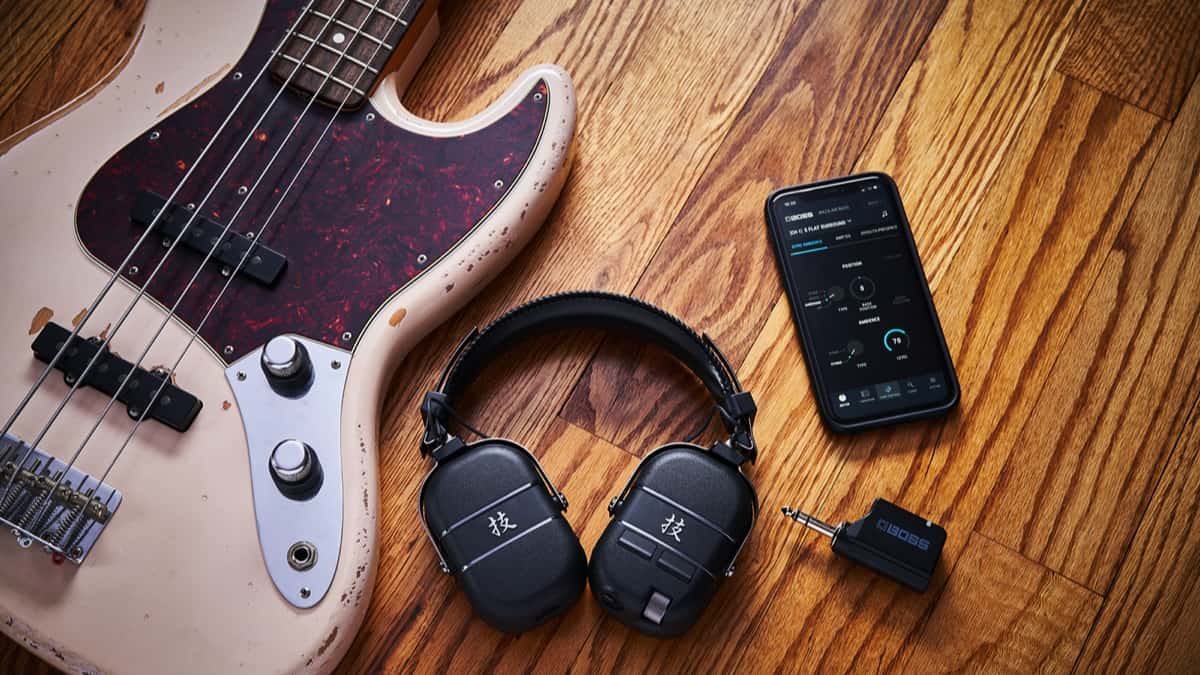
A review of the Boss WAZA AIR Bass Wireless Personal Bass Amplification System…
This seems like a timely moment to discuss the constraints of practicing bass at home. Maybe you’re like me: stuck at home a lot over the last 18 months, gigging a whole lot less due to the pandemic, working during the day, and relegated to practicing at night while my family sleeps. Maybe you live in an apartment building with thin walls, and cranky neighbors, making firing up your amp less than ideal at all hours. Maybe you spend a lot of time on tour buses and in hotel rooms where headphones are the only way it’s gonna happen. Whatever the reason, there are a whole lot of us for whom practicing bass means playing through headphones to avoid disturbing others. And let’s face it, it’s just not the same. I’ve gotten used to it over the last bunch of years, as my only real practice time is in the evening after my family drifts off to sleep. But it just doesn’t compare to plugging into an amp and feeling some air move.
So, when I happened upon Boss’s new WAZA AIR Bass Wireless Personal Bass Amplification System, an all-encompassing headphone practice solution for bassists, offering 3D-like “spatial technology”, app-controlled amp modeling, EQ and effects, and native practice rhythms, I was extremely interested.
The Boss WAZA AIR Bass showed up and immediately I got to work.
It did take me a minute to get a handle on how to utilize all of the features, but at its simplest level, I was able to plug in the wireless transmitter, turn on the wireless headphones and hear my bass in glorious detail, with great fidelity and dynamic 3D sound.
Getting the most out of the WAZA AIR Bass involves downloading the app, for iOS and Android, and syncing the unit with your device’s Bluetooth. From there, you have access to the app’s 30 different customizable and storable effects and 5 different amplifier models, in addition to a great sounding EQ, tuner, metronome and 10 different drum grooves for practicing. So many of the parameters of the effects and amp are editable, which really allows you to dial in your preferences. While not the most intuitive interface I’ve encountered, it just takes a few minutes to learn your way around.
Let’s talk about the WAZA’s “Advanced Ambient Setups”, which I think is the jewel of the WAZA’s many cool features. 3 different modes provide totally different tactile listening experiences: Surround mode places the amp in a virtual room, providing an immersive experience like playing in a recording studio. In Static mode, the combined amp and room sound changes depending on where you move your head, which really gives the impression of being in a room with an amplifier. Stage mode places the sound behind you, like a “virtual backline” along with the onboard acoustic drum patterns or music streamed from your phone over Bluetooth.
Without getting into the weeds describing the numerous cool effects the WAZA provides, there is a LOT to play with. Everything from subtle modulation effects, compression, overdrive, and filter sounds, to far-out ring-modulated tones and full-blown synth madness is on tap, with pretty impressive amounts of tweakability for each sound. Develop a patch you love and store it to one of WAZA’s 6 memory slots, which you can cycle through with the toggle buttons on the right headphone assembly.
Let’s talk about the headphones themselves.
Boss really did a great job with the design and build quality of the WAZA AIR’s phones. Custom-designed drivers with large 50mm magnets deliver great clear tone with plenty of low end and tons of clarity. The over-the-ear design is comfortable but snugly sealed (for my big noggin) and the ‘immersive experience’ is not just hyperbole. The WAZA is super detailed and rich sounding, with plenty of headroom for clean bass and crisp treble.
A 3 LED status indicator on the left cup tells you if the unit is on, whether the transmitter is connected, and whether or not its paired to your Bluetooth device for playing back music. On the right cup, you’ll find the up/down buttons for toggling stored presets, as well as a heavy-duty feeling roller knob for master volume. An optional padded carrying case is remarkably low profile and durable, and securely holds the phones, transmitter and charging cable.
Speaking of the charging cable, this thing Holds. A. Charge. I’ve been using it for a bunch of hours and it’s still going strong. The included USB charging cable allows you to recharge the lithium-ion-powered headphones and transmitter, although unfortunately not at the same time (easy fix if you get a second charging cable).
Boss was kind enough to provide an EV-1-WL Wireless Midi Expression Pedal which offers all kinds of additional parameter control over the WAZA AIR experience. Control volume, effects parameters, patch selection and more when you pair the device with the Bluetooth wireless expression pedal.
I will say, when I first fired up the unit, I was having some issues with it disrupting my Wi-Fi signal in my home, but after a couple of on/off cycles, the unit seems to have found a channel that was free of interference. Similarly, in early testing, I heard a few crackles and pops as if the signal was clipping or being interfered with. This also resolved on its own. Boss states that the WAZA will cycle through different channels to intelligently locate the frequencies with the least amount of noise or interference. I can only assume that’s what happened and now it’s basically perfect in terms of both sound and interference. Smart little bugger.
At $449, the WAZA AIR Bass isn’t particularly cheap. But it is uniquely useful, very well made, and packed with cool features. Whether you’re a pro or a hobbyist, there is a lot of value in a high-quality headphone practice rig. Sure, you could put together a cheaper headphone practice rig, but taking into account all that the WAZA offers: the immersive spatial/ambient experience, the build quality, fidelity and how concise the setup is (no cables, no external interface), I’d be hard-pressed to recommend a more elegant and effective headphone practice tool. For more info, visit the Boss WAZA AIR Bass online.
Read my review of the Accugroove El Jefe 2×12 Bass Cab
Bass Videos
String Instrument Humidifiers
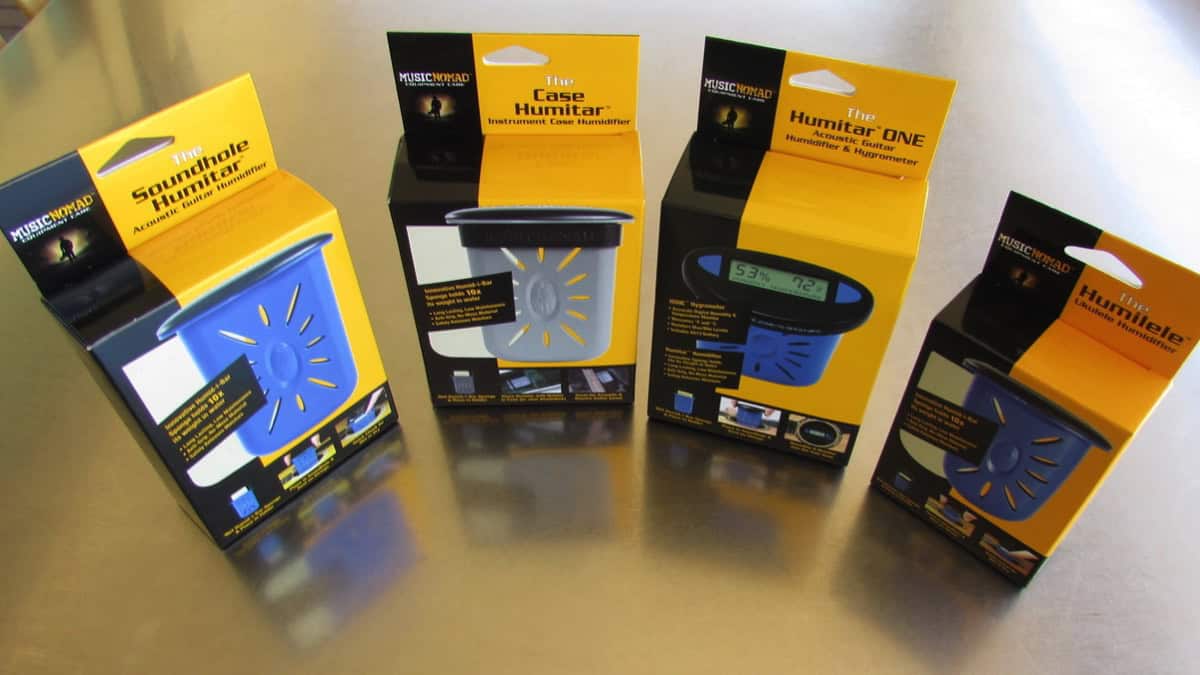
String Instrument Humidifiers
After living in some very humid parts of the country for decades, we moved to a dryer, much sunnier location. As a result, I started noticing some fret sprout on my string instruments and recently did a video on fret sprout correction.
It occurred to me that I should take a more preventative approach to string instrument humidification. Of course, I turned to my instrument maintenance experts, Music Nomad Equipment Care, for a solution and they suggested their Humitar series. (Note: They sent two press samples and I purchased the remainder online.)
Join me as I look at these useful tools for keeping my string instruments in tip-top condition.
The Humitar series is available online at Music Nomad Equipment Care, as well as Amazon.com
Bass Videos
Review: CrystalBright Rombo Picks
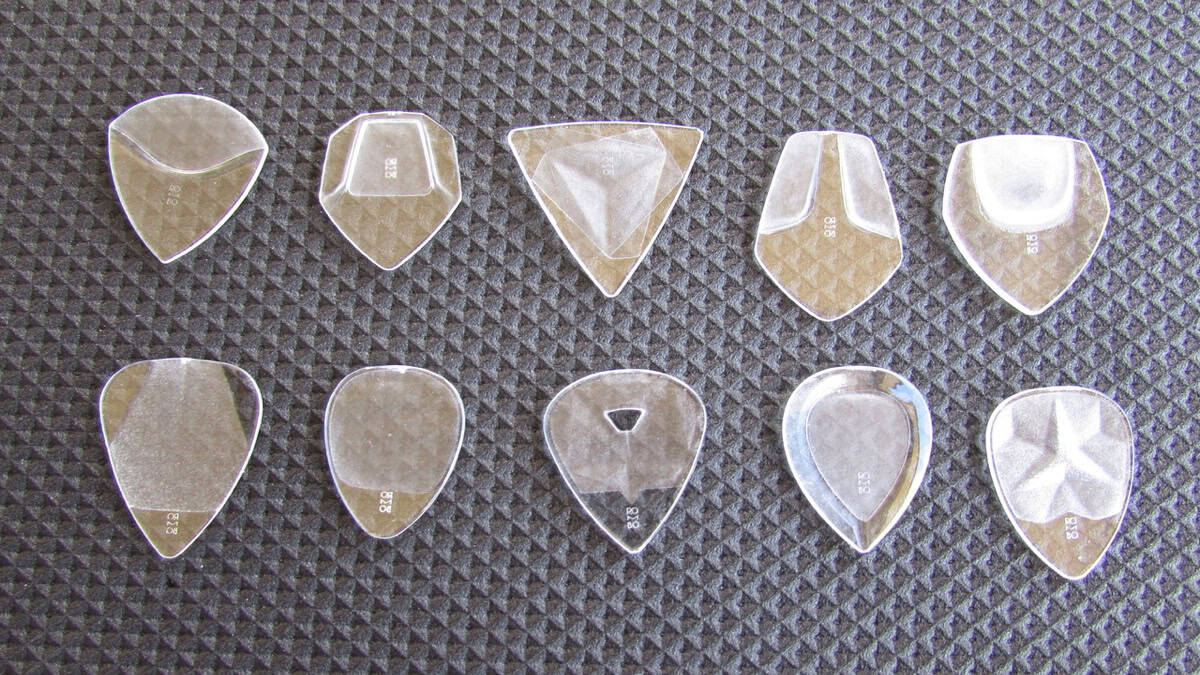
CrystalBright Rombo Picks
PR SamplePlaying bass with a pick is still a touchy subject in our community. I believe you should be able to use whatever you need to get your sound. Even though I mostly play with my fingers, I like to check out innovative new picks that might have something new to offer, sonically speaking.
Judith and Carlos from Rombo recently contacted me about a new material called CrystalBright that they have been researching for the last 12 months and offered to send some prototype picks. After trying them out, I put together this video with my findings.
For more info check out @rombopicks
Gear
New Joe Dart Bass From Sterling By Music Man

Sterling by Music Man introduces the Joe Dart Artist Series Bass (“Joe Dart”), named after and designed in collaboration with the celebrated Vulfpeck bassist.
Above photo credit: JORDAN THIBEAUX
This highly-anticipated model marks the debut of the Dart bass in the Sterling by Music Man lineup, paying homage to the Ernie Ball Music Man original that all funk players know and love. The bass embodies many of the original model’s distinctive features, from its iconic minimalist design to the passive electronics.

The design process prioritized reliability, playability, and accessibility at the forefront. Constructed from the timeless Sterling body, the Dart features a slightly smaller neck profile, offering a clean tone within a comfortable package. The body is crafted from soft maple wood for clarity and warmth while the natural finish emphasizes the simple yet unique look.
Engineered for straightforward performance, this passive bass features a ceramic humbucking bridge pickup and a single ‘toaster’ knob for volume control. Reliable with a classic tone, it’s perfect for playing in the pocket. The Dart is strung with the all-new Ernie Ball Stainless Steel Flatwound Electric Bass Strings for the smoothest feel and a mellow sound.

The Sterling by Music Man Joe Dart Bass is a special “Timed Edition” release, exclusively available for order on the Sterling by Music Man website for just one month. Each bass is made to order, with the window closing on May 31st and shipping starting in November. A dedicated countdown timer will indicate the remaining time for purchase on the product page. Additionally, the back of the headstock will be marked with a “2024 Crop” stamp to commemorate the harvest year for this special, one-of-a-kind release.
The Joe Dart Bass is priced at $399.99 (MAP) and can be ordered globally at https://sterlingbymusicman.com/products/joe-dart.
To learn more about Joe Dart, visit the official Vulfpeck artist site here https://www.vulfpeck.com/.
Gear Reviews
The Frank Brocklehurst 6-String Fretless Bass Build
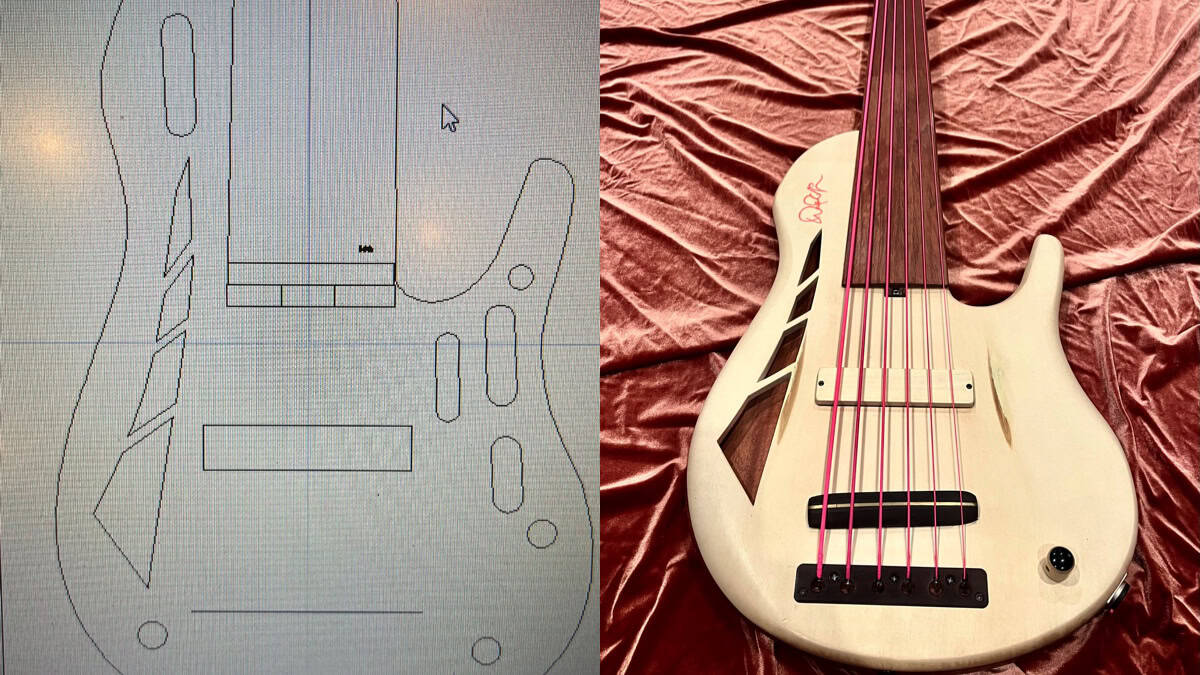
A few months ago, my Ken Bebensee 6-string fretted bass needed some TLC. You know, the one rocking those Pink Neon strings! I scoured my Connecticut neighborhood for a top-notch luthier and got pointed to Frank Brocklehurst, F Brock Music. He swung by my place, scooped up the bass, and boom, returned it the next day, good as new. Not only that, he showed up with a custom 5-string fretted bass that blew me away. I couldn’t resist asking if he could whip up a 6-string fretless for me.
Alright, let’s break down the process here. We’ve got our raw materials: Mahogany, Maple, and Holly. Fun fact – the Mahogany and Maple have been chilling in the wood vault for a solid 13 years. Frank is serious about his wood; they buy it, stash it away, and keep an eye on it to make sure it’s stable.

First up, they’re tackling the Mahogany. Frank glues it together, then lets it sit for a few days to let everything settle and the glue to fully dry. After that, it’s onto the thickness planer and sander to get it nice and flat for the CNC machine. The CNC machine’s the real star here – it’s gonna carve out the body chambers and volume control cavity like a pro.

While the Mahogany’s doing its thing, Frank goes onto the neck core. Three pieces of quartersawn maple are coming together for this bad boy. Quartersawn means the grain’s going vertical. He is also sneaking in some graphite rods under the fingerboard for stability and to avoid any dead spots. The truss rod is going to be two-way adjustable, and the CNC machine’s doing its magic to make sure everything’s just right.

Now, onto the design phase. Frank uses CAD software to plan out the body shape, neck pocket, chambering, and those cool f-holes. I had this idea for trapezoid F-holes, just to do something different. The CAD software also helps us map out the neck shape, graphite channels, and truss-rod channel with pinpoint accuracy.

Once everything’s planned out, it’s CNC time again. Frank cuts out the body outline, neck pocket, and the trapezoid F-holes. Then it’s a mix of hand sanding and power tools to get that neck just how we like it. Oh, and those f holes? We’re going for trapezoids of different sizes – gotta keep things interesting.

Next step: gluing that neck into the pocket with some old-school hide glue. It’s got great tonal transfer and can be taken apart later if needed. Then it’s onto hand-carving that neck-body transition.

For the custom-made bridge, Frank uses brass for definition and Ebony for tonal transfer and that warm, woody sound.

BTW, for tunes, Frank went with Hipshot Ultralights with a D Tuner on the low B. This way I can drop to a low A which is a wonderful tone particularly if you are doing any demolition around your house!
Now it’s time for the side dots. Typically, on most basses, these dots sit right in the middle of the frets. But with this bass, they’re placed around the 1st, 3rd, 5th, 7th, 9th, and 12th frets.

Frank’s got his pickup hookup. Since the pickup he was building wasn’t ready, he popped in a Nordstrand blade to give it a whirl.

It sounded good, but I was itching for that single-coil vibe! And speaking of pickups, Frank showed me the Holly cover he was cutting to match, along with all the pink wire – talk about attention to detail!

A couple of things, while it is important for me to go passive, it is equally important for me to just go with a volume knob. Tone knobs are really just low-pass filters and the less in the way of a pure sound for me, the better.
Finally, it’s string time! As usual, I went for the DR Pink Neon strings. Hey, I even have matching pink Cons…Both low tops and high!

Once we’ve got everything tuned up and settled, we’ll give it a day or two and then tweak that truss rod as needed. And voila, we’ve got ourselves a custom-made bass ready to rock and roll.

I want to thank Frank Brocklehurst for creating this 6 string beast for me.
Gear Reviews
Review Transcript: BITE Custom Bass – The Black Knight PP Bass
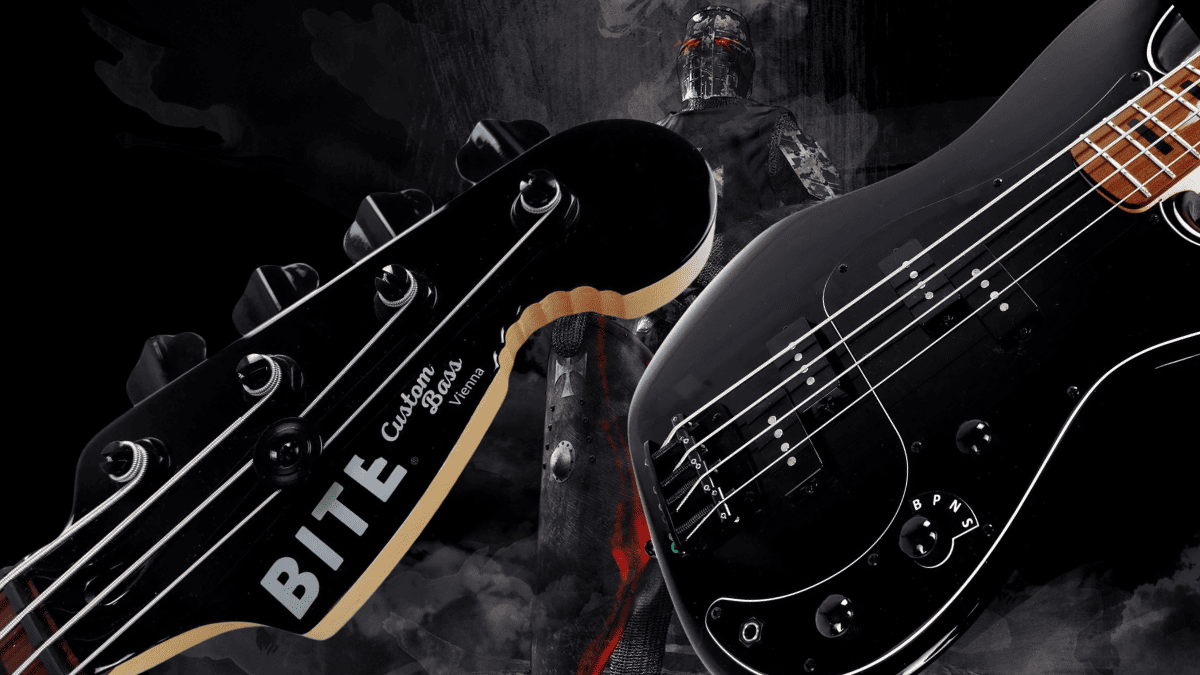
This is a written transcript of our video review of the BITE Custom Bass Black Knight PP Bass originally published on March 4, 2024
BITE Custom Bass – The Black Knight PP Bass Review…
Bass Musician Magazine did a review on a Steampunk bass from BITE Guitars about three years ago, it was an amazing instrument, and we were very impressed. Now we’re happy to bring you another BITE bass, the Black Knight PP.

Everybody needs a P-type bass, it’s the standard of bass. If you’re recording, they want you to have a P bass. So why not have something that gives you a little more by having two instead of one P pickup. That’s the idea of this bass, it’s the first thing that leaps out: the double P pickup configuration.

Installing two of their 1000 millivolt split-coil pickups, BITE then went one step further and wired them up in a 4-way parallel/series circuit, a look at the controls reveal a 4-way rotary selector:
The first position, marked “B”, gives you the bridge pickup by itself.
The second position, marked “P”, gives you the bridge and neck pickups in parallel mode, that’s the traditional J-type circuit, it reduces output due to the physical law of parallel circuits.
Position number 3 is marked “N”, it gives you the neck pickup by itself.
And finally, number 4, marked “S”, gives your bridge and neck in a series (humbucking) mode which adds up resistances and thus boosts output. The other two controls are master volume and master tone.

What’s more, like every BITE bass, this one also has a reinforced headstock heel designed to give it extra output and sustain. The BITE website features a graph and explanation of what they have done to the heel, as compared to traditional headstocks.

A look at the body reveals a beautiful Black Blast body finish and underneath that we have alder wood. The bass has a matching headstock with a 4-in-line tuner setup and the traditional bite out of it, so everybody will know what kind of bass you’re playing. The pickguard is 3-ply black, the neck is vintage tinted hard maple and it has a satin speed finish at the back which keeps your thumb from sticking.
On top of that, there’s a clear-coated roasted black locust fretboard with black blocks marking the frets. The nut is a black Graph Tec nut, we’ve got diamond dome control knobs, and the tuners are lightweight compacts with cloverleaf buttons and a 1:17 ratio precision gear. The bridge is a Gotoh brass bridge with 19-millimeter string spacing.
Overall measurements: we’ve got a standard 34″ scale, a 1.65″ width nut and a C neck profile. This bass weighs 8.2 pounds, or 3,7 kilograms for our metric friends, and it uses standard 18% nickel silver frets.
Taking a closer look at the sound, this bass is a joy to play. The BITE proprietary 1000 millivolt pickups deliver an extraordinary amount of output which is surprising considering this is a passive instrument. You may even want to set your amp to active mode because of all of the juice you’re getting out of this guy.
The tonal possibilities are very versatile, it’s a straight P if you want but also much more with those different arrangements of the circuitry. So why have multiple basses when you’ve got one that can give you your basic P plus a lot more?
To sum it up, the Black Knight PP is an amazing instrument. The attention to detail that BITE puts into their basses is second to none. This bass is also amazingly balanced and gorgeous to hold and feel with the satin neck finish.
For more information, visit online at bite.guitars/product/black-knight-pp










